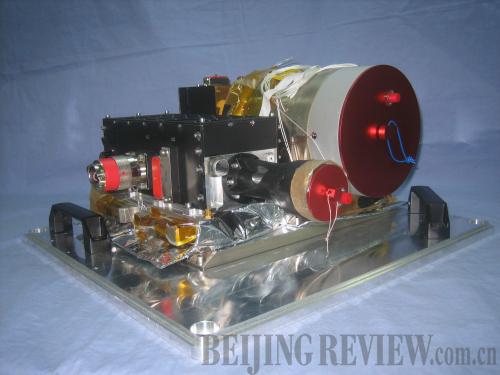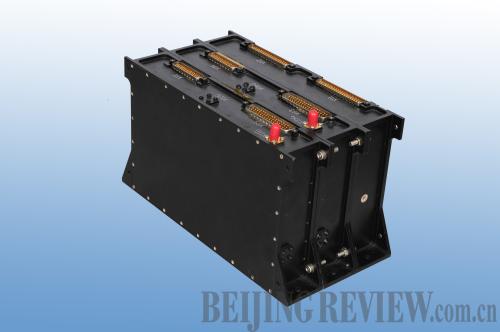|
 |
|
The laser altimeter (XINHUA) |
Produced as a backup satellite for Chang'e-1, Chang'e-2 was officially given the mission as an improved lunar probe after the successful mission of Chang'e-1.
To acquire more detailed Moon data, Chang'e-2 entered a lower lunar orbit about 100 km above the surface, compared with the 200-km altitude of Chang'e-1, according to the control center.
The satellite will eventually be maneuvered into an orbit just 15 km above the Moon. At that point, Chang'e-2 will take pictures of the Moon's Bay of Rainbows area, the proposed landing ground for Chang'e-3, with a resolution of less than 10 meters.
"We have come up with 108 emergency plans to ensure Chang'e-2's safe trip," said Ma Yongping, Deputy Director of the BACC. Ma said the satellite was merely 15 km from the Moon at the nearest point, and that a malfunction of the satellite's engine could cause the satellite to crash on the Moon's surface. Ma said scientists have conducted a major update to the control system to eliminate this possibility and ensure that if there is an issue with the satellite, the control center on the ground could take effective measures to solve the problem.
Ouyang penned an article for the latest issue of Chinese quarterly journal Spacecraft Engineering, which reveals Chang'e-2's eight technological improvements over Chang'e-1.
In addition to the ability to orbit closer and a shortened trip to the Moon, the rocket carrying Chang'e-2 has two more boosters than the rocket carrying Chang'e-1, in order to achieve higher accuracy and speed demanded for Chang'e-2 to enter its orbit.
 |
|
The high-speed data microwave modulator (XINHUA) |
Meanwhile, Chang'e-2 carries a laser altimeter with a range accuracy of 5 meters to obtain more accurate topography data on the proposed landing area for Chang'e-3. The charge-coupled device camera carried by Chang'e-2 will improve photos' spatial resolution from around 120 meters during the Chang'e-1 mission to less than 10 meters.
Chang'e-2's major scientific missions include completing accurate mapping and three-dimensional imaging of the proposed landing area and studying the elements composition and distribution on the Moon, electromagnetic properties of lunar soil, the thickness of lunar soil and the environment close to the Moon. The data will be cross-checked with data obtained by Chang'e-1.
Moreover, an elliptical orbit which Chang'e-3 will travel along will be rehearsed. The orbit's perigee of 15 km from the Moon will create a new record for Chinese lunar probes. According to the requirements of the second stage of China's lunar exploration program, Chang'e-2 has a new X-band control system, enabling China's deep space control capacity to cover the distance between the Earth and the Mars.
Future of resources exploration
As the Earth's only natural satellite, the Moon has records of all geological activities since its formation 4.6 billion years ago. The information will be significant for mankind to learn about the origin and evolution history of the Earth, the solar system and the universe. Moreover, the Moon is rich in energy and mineral resources. Effective detection data collected by Chang'e-1 show the global distribution of the three elements of uranium, thorium and potassium and regional distribution for elements like magnesium, aluminum, silicon, iron and titanium.
| 